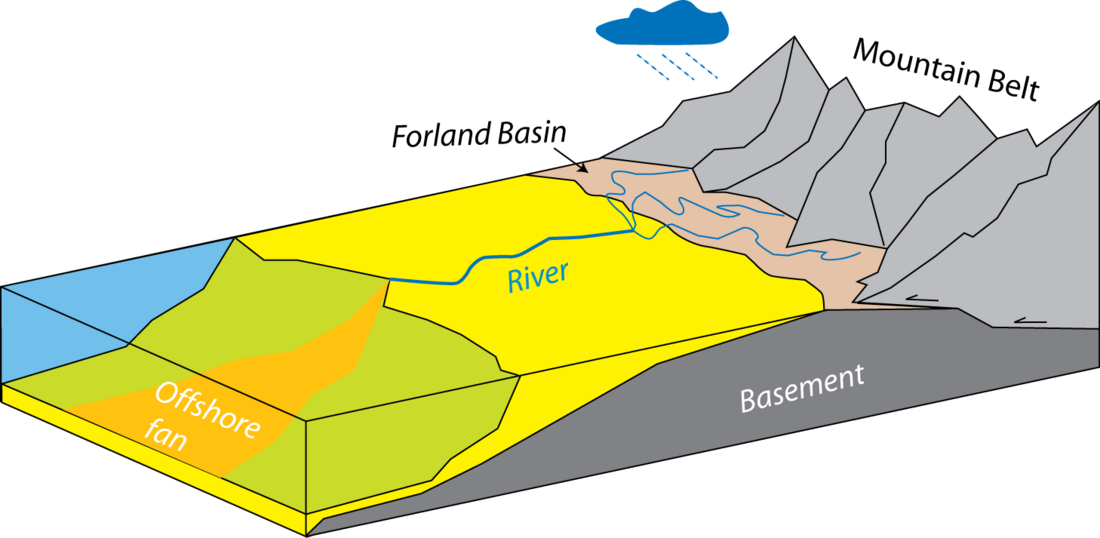Abyssal fans, also known as deep-sea fans, underwater deltas, and submarine fans, are underwater geological structures associated with large-scale sediment deposition and formed by turbidity currents. They can be thought of as an underwater version of alluvial fans and can vary dramatically in size, with widths from several kilometres to several thousands of kilometres.[1] The largest is the Bengal Fan, followed by the Indus Fan, but major fans are also found at the outlet of the Amazon, Congo, Mississippi and elsewhere.[2][3][4]

Formation
Abyssal (or submarine) fans are formed from turbidity currents.
These currents begin when a geologic activity pushes sediments over the edge of a continental shelf and down the continental slope, creating an underwater landslide. A dense slurry of muds and sands speeds towards the foot of the slope, until the current slows. The decreasing current, having a reduced ability to transport sediments, deposits the grains it carries, thus creating a submarine fan. The slurry continues to slow as it is moved towards the continental rise until it reaches the ocean bed. Thus results a series of graded sediments of sand, silt and mud, which are known as turbidites, as described by the Bouma sequence.
See also
References
Sources
Wikiwand in your browser!
Seamless Wikipedia browsing. On steroids.
Every time you click a link to Wikipedia, Wiktionary or Wikiquote in your browser's search results, it will show the modern Wikiwand interface.
Wikiwand extension is a five stars, simple, with minimum permission required to keep your browsing private, safe and transparent.
